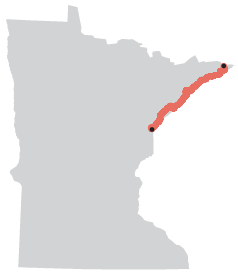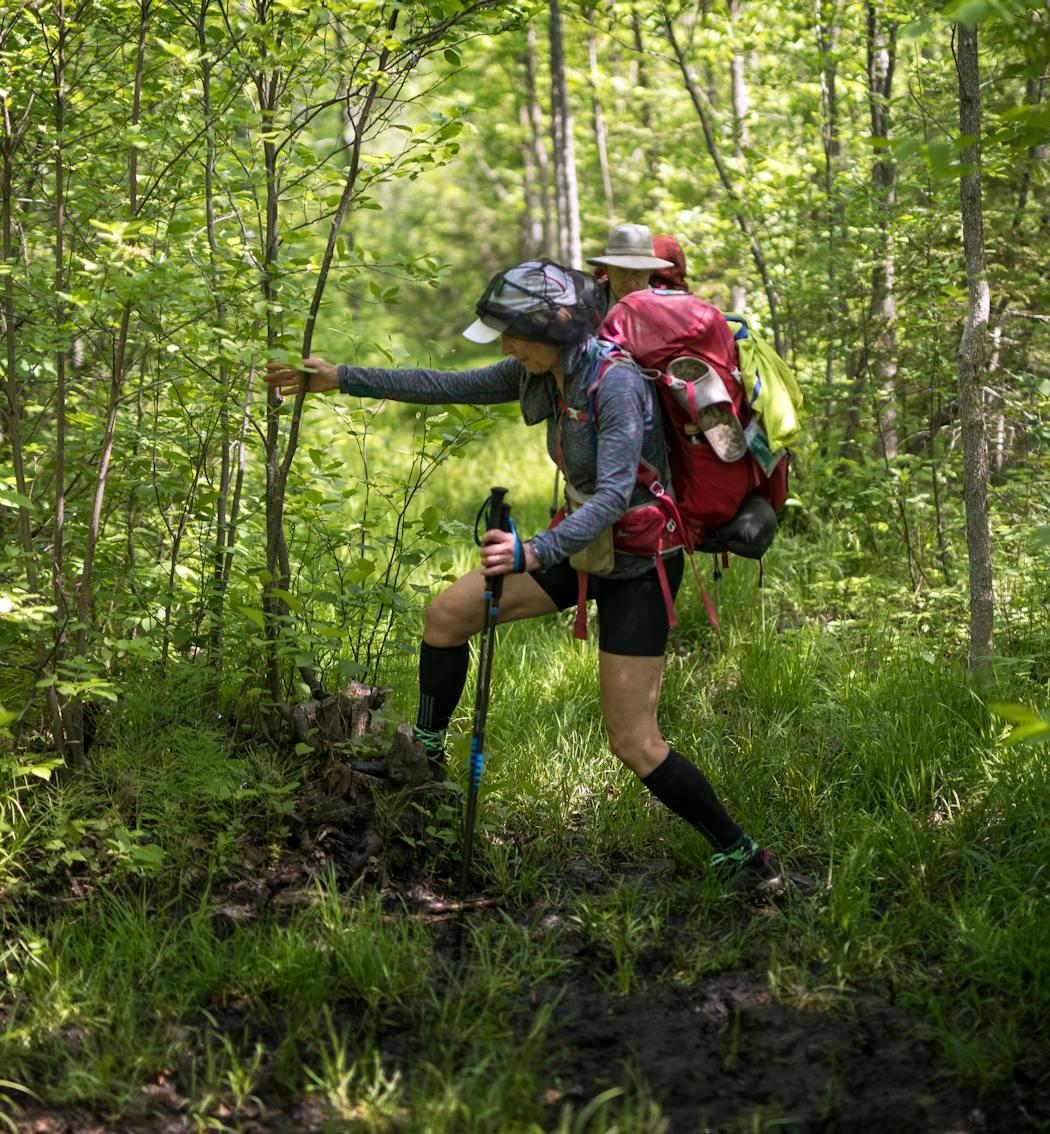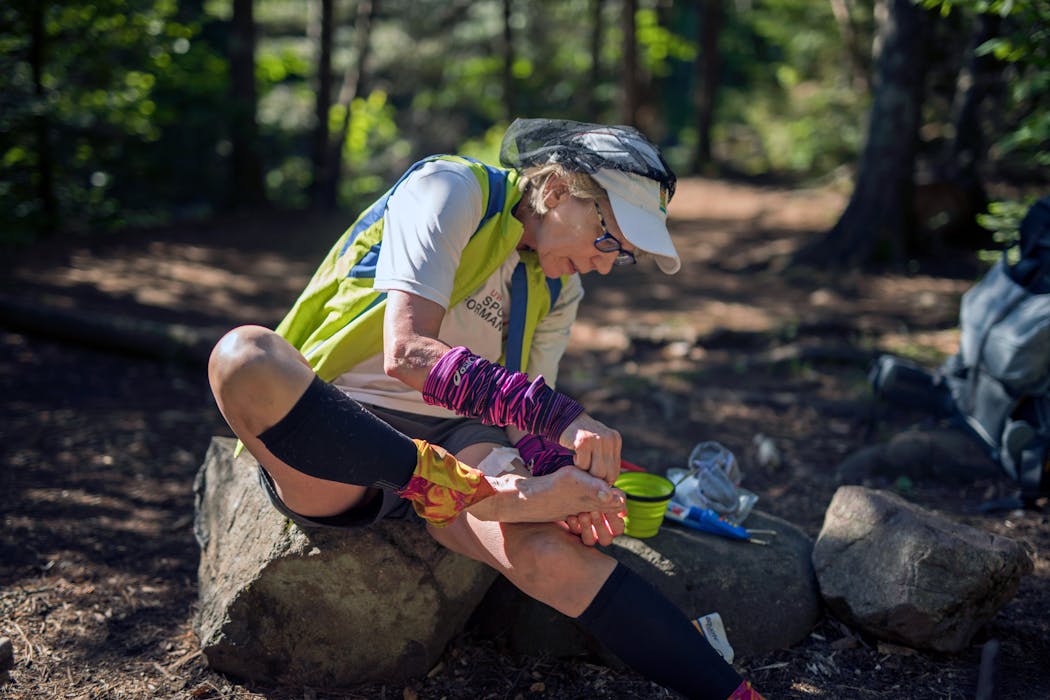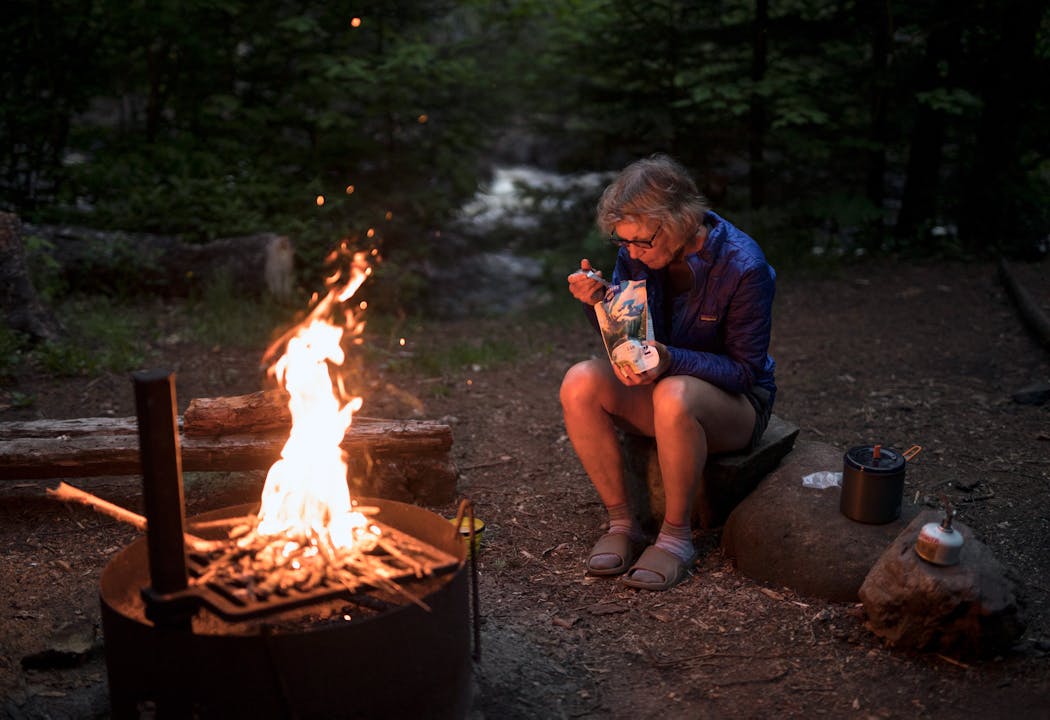Gifts amid the grind
Drops of sweat gathered on my brow as I picked my way up the northeastern side of the Temperance River. It was Day 13 and slow-going; the path climbs nearly 1,000 feet from the riverbed to the summit of Carlton Peak some 3½ miles away. An hour into my trek, I rounded a bend and spotted a groundhog sitting in the middle of the trail. Fishing out my phone, I willed it to stay in place so I could take some pictures. The animal complied, looking as if it was quite used to photo shoots.
But then, as I tucked my phone back in its pouch and began to advance down the trail, the plump rodent's demeanor changed. It began snapping its long, front teeth at me, the fur on its shoulders puffing out in indignation. Was this a mother protecting her young? I hadn't seen any babies, nor heard squeaks or scuffles coming from the vegetation.
"I don't want any trouble," I called out, trying again to move forward. "I just want to get by."
The furry herbivore backed up one step, then stopped and turned its head away from me, as if to indicate it couldn't hear me, or didn't care what I was saying.
"Leave me alone. I just want to keep hiking," I said, making little clucking noises to induce it to move. Nothing.
Changing tactics, I thrust my trekking poles overhead, shouting, "Ah! Rah! I'm a big scary thing!" Then I blasted a sharp note on my emergency whistle. "Out of the way! I'm a big, bad, scary hiker!" Tweet! TWEET!" The animal shuffled a little but held its ground.
For the next 20 minutes, I tried everything I could think of to get the groundhog to step aside and let me pass. I tossed sticks, stomped on the ground, waved my trekking poles, yelled. But it stayed put, snapping its yellowed incisors at me whenever I got too close. What to do?
I couldn't stand here all day. It would take too much time to backtrack down to Hwy. 61 and hike around this segment. No other hikers were around to assist. Then my hand touched something hard in my pack's front pouch — a canister of mace. I'd never used mace before. But now, fearing I was squaring off with a rabid animal, I took aim and pressed the button. A stream of red fluid shot out and the groundhog flew into the bushes with a squeal. I raced past and down the trail.
Less than an hour later, I was standing on the summit of Carlton Peak, a billion-year-old slab of whitish rock rising 1,500 feet skyward. A popular hiking destination, it offers prime vistas of Lake Superior. But my groundhog encounter, coupled with the day's heat and some minor wrong turns trying to reach the summit, put me in a foul mood. I gave the charming view but a cursory glance before stomping downhill and on toward Oberg Mountain.
That evening, checking into a Tofte motel, I bumped into thru-hikers BlueBerry and Green Tortuga. They, too, were finding the trail tough. BlueBerry, in particular, was having a hard time dealing with the bugs at camp. So they were staying in town and taking a "zero day" tomorrow, trail-speak for a day off. Like me, they'd also decided to slow their pace.
Simple joys erase the pain
Harriet Quarles met me at the fog-enshrouded parking lot off Caribou Trail the next morning, ready to shuttle me back to Oberg Mountain, my starting point today. A petite older woman wearing jeans and a plaid shirt, she was as colorful as the pink stripe running through her hair. As we rumbled along, she told me her story.
MELANIE'S HIKING TIPS
After hiking 5,500 miles over the last several years, Melanie Radzicki McManus has learned a thing or two. Here are some of her best practices:
Create a flexible plan
Plan where you'll start and stop hiking each day, but also target an earlier campsite or trailhead in case the going gets tough. When it comes to challenging paths, you may not get as far as you normally do. Also wise: Start out with low-mile days, then build up from there.
Use trekking poles
Trekking poles are multipurpose tools every hiker should have. They take pressure off of your knees, legs, ankles and feet, and allow you to move more quickly and easily, especially when heading uphill or downhill. They can also be used for balance, to gauge how deep a water crossing is and to push aside thorny vegetation. And using them on a warm day ensures your hands and fingers won't swell, as they keep them parallel to the ground, not pointed down.
Bring zip-top bags
Use them to securely hold items such as used hand wipes and food wrappers, or your cell phone if it begins to rain.
Consider compression sleeves
Compression garments can be worn on your calves and arms. Calf sleeves protect your lower legs from the majority of scruffy vegetation while being cooler than pants. Arm sleeves are great for days when the temperature varies. Pull them up when chilly and roll them down when it's warm. Try them out before hitting the trail.
Carry lubricant
Whether you prefer petroleum jelly or a commercial product such as Body Glide, slather it on anywhere you develop hot spots. Keep it handy after it rains or you complete a water crossing, as wet shorts can lead to serious chafing. Also good to have: lip balm.
Don't forget carabiners
Carabiners are great at securing items to your pack such as car keys, water bottles and sandals. At night, use them to create a laundry line.
Harriet and her husband worked for years as truckers. Based in the South, they eventually settled on the North Shore during the summers, where they repaired and serviced recreational vehicles. Now widowed, Harriet operated a taxi service every summer, mainly shuttling hikers on and off the Superior Hiking Trail's northern reaches. Her bright blue business fliers were tucked at every trailhead — she knew them all by heart — and about 75 percent of her business involved bailouts — that is, rescuing hikers who were calling it quits because they'd overestimated their abilities, underestimated the trail or both.
"You wouldn't believe some of the questions I get from unprepared hikers," she said, noting one woman asked how many cellphone charging stations were placed along the trail. "Ha!" she snorted. "Sure, there's one every three miles." More than a few hikers alight from her van and begin marching the wrong way down the trail. "I have to chase after a lot of people and point them in the right direction," she said. Before slipping onto the trail, I assured Harriet — who would be shuttling me the next few days — that I wouldn't be bailing or accidentally heading southbound.
So while BlueBerry and Green Tortuga were buying more snacks, poking around Tofte and lazing in their motel room, I trod through rain, then stifling heat and humidity. I also endured mud and searing climbs, scruffy vegetation and standing water. This trail was never going to be easy. But then, near day's end, I spotted a beaver. It was lazily swimming around Lake Agnes, a large V spreading in its wake. It ventured so close to shore I could see its tiny, rounded ears, black jelly-bean nose and the rivulets of water running down its back. Without warning, it dove underwater with a great thwacking of its paddle-like tail, sending concentric circles spreading across the lake's smooth surface.
"Wow," I whispered. "That was so cool."
And this is why I hike. Yes, the miles are often long and rugged. There are times I wonder why I'm putting myself through blisters and sunburn, mud and water, aching body parts and scratched flesh. Then the trail reminds me — it's the little gifts along the way.
Today's present was the beaver. Yesterday it was the smiley face carved into the end of a downed tree. Earlier, it was twin wild roses that appeared trail-side, two cheery, pink dots puncturing the day's dreary haze. Memories of the trail's rewards began popping into my mind like fireworks: the newly hatched dragonfly drying its wings atop a slender, purple lupine; the collection of cairns I stumbled upon, artistically stacked on large, flat stones in a rushing creek; the pride I felt after conquering a tough climb; the novelty of washing up at night in a tiny stream; and, every day, listening to a cacophony of joyous melodies. The black-capped chickadees' fee-bee song. The white-throated sparrows' triplet-laden tunes. The woodpeckers' staccato beats. Even the ravens' harsh screeching was captivating.
That evening, dining with BlueBerry and Green Tortuga, we swapped tales of the trail and griped lightheartedly about the endless bugs, mud and rain. Although we agreed fall would have been a better season to tackle this trail, none of us was sorry we were right here, right now.
The previous day, BlueBerry told me that even though he had never written a poem before, he wanted to write one about the Superior Hiking Trail after he finished. I'd love to read it if he does.
Melanie Radzicki McManus is a freelance writer. Her book "Thousand-Miler" chronicles her thru-hike of Wisconsin's Ice Age National Scenic Trail. She lives near Madison, Wis.






